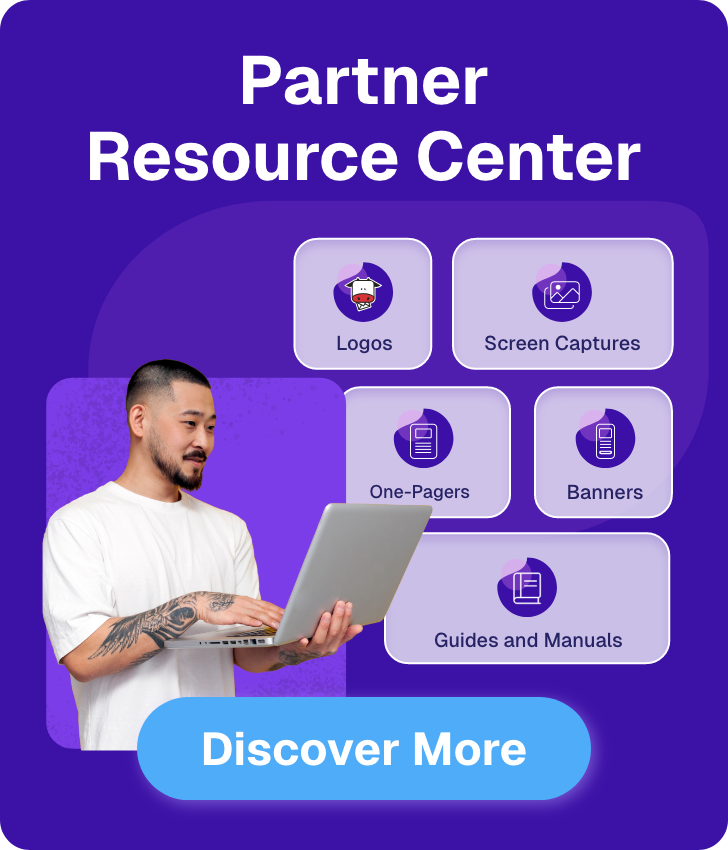
Email Marketing Vs. Social Media: Which Is Best For You [2025]
When it comes to digital strategy, the debate around email marketing vs. social media is still going strong. Both channels can boost awareness, drive conversions, and keep customers engaged. However, they work best in different ways.
The smart move isn’t picking one over the other, but knowing how to use each channel where it performs best.
In this guide, we’ll break down what email marketing and social media marketing are, compare their strengths, and show you how to combine them for the best results.
Email Marketing & Social Media Statistics
Both email and social media may look appealing, but the real question is: do they deliver? Let’s look at the latest stats for each channel to see how effective they are.
Email marketing stats
We’ll kick off with a few email marketing statistics:
- The number of emails sent and delivered is expected to reach 408.2 billion by 2027, showing email’s enduring impact.
- On average, email marketing returns $10–$36 for every $1 spent, with the best-performing companies earning up to $50.
- 47% of marketers stated that email marketing is their most effective channel, followed by social media marketing (39%), SEO (33%), and content marketing (33%).
- Almost half of the consumers (49%) responded that they’d like to get weekly emails from their preferred brands.
- Consumers marketed via email often spend 138% more than shoppers who do not receive email offers.
As you can see, the numbers show that email marketing continues to deliver strong results. From high ROI and consumer preference to its impact on spending habits, it’s a channel that can’t be ignored.
The key is to understand your audience, tailor your messaging to their needs, and use email strategically as part of your broader marketing plan.
Social media marketing stats
Here are the most informed social media statistics you need to know:
- 5.24 billion people currently use social media (63.9% of the global population). Among internet users aged 18+, adoption climbs to 86.6%.
- The average user engages with 6–7 platforms every month, with Gen Z users often juggling even more.
- Globally, people spend an average of 2 hours and 21 minutes per day on social media.
- The most popular platforms worldwide are Facebook (3.07B monthly users), YouTube (2.5B), WhatsApp and Instagram (2B each), with TikTok close behind at 1.58B, rapidly gaining ground as one of the fastest-growing networks.
- In the U.S., 73% of the population (253M people) use social media, with higher adoption among younger groups (84% of ages 18–29).
- 57% of consumers follow brands for product updates, while 91% of followers eventually visit the brand’s website or app, 89% make a purchase, and 85% recommend the brand to others.
Hence, whether you have a small business or lead a large corporation, it’s wise to craft a social media plan and make the most of those trends.
Email Marketing vs. Social Media: Pros & Cons
Undoubtedly, the stats above are impressive. However, if you’ve just launched your own business or you’re looking for ways to optimize your existing strategy, you may be wondering how to distribute your marketing budget.
Here, we’ve listed the pros and cons of each method to help you make the right decisions based on your business goals.
| Pros | Cons | |
| Email Marketing |
|
|
| Social Media Marketing |
|
|
Email & social media limitations
While the benefits of email and social media are clear, it’s important to expand a little more on their limitations. Recognizing these challenges helps you set realistic expectations and create strategies that work around them.
For email marketing, that would be deliverability. Keep an eye on your email provider to ensure that your campaigns don’t end up in spam and your bounce rate remains low. Otherwise, this can damage your brand authority down the road.
Plus, to excel in email marketing, it’s essential to have access to specific resources. Creating compelling copy and a newsletter design that sticks may need some practice, but it’s worth the effort.
As for social media, the main disadvantage is that it’s difficult to measure its effectiveness and ROI. Although you can gain insights into how social ads perform, translating the impact of organic to ROI is challenging.
Plus, if users start complaining about you on social, this can hurt your brand image, depending on the importance of the matter. So it’s essential to stay alert to respond quickly if similar incidents occur.
Email Marketing & Social Media Use Cases
Both email and social media bring unique strengths to the table. The key is knowing when to rely on each channel.
When to use email marketing
Email is most effective when you want to go deeper with your audience and guide them closer to conversion.
- Personalize campaigns: Use segmentation to deliver targeted offers, recommendations, or updates that feel tailored to each subscriber. Even a customized subject line can improve engagement.
- Nurture relationships: Keep existing customers engaged with newsletters, onboarding flows, and loyalty rewards. Regular communication builds trust and encourages repeat purchases.
- Drive traffic: Use email CTAs to bring subscribers back to your site, whether for blog posts, product pages, or special offers that can lead to conversions.
When to use social media marketing
Social platforms are best when your goal is visibility, reach, and creating conversations around your brand.
- Expand your audience: Algorithms and paid ads push your content to people beyond your follower base, making social ideal for lead generation and awareness.
- Build brand awareness: Share content that resonates with your audience and encourage reactions like likes, shares, or reposts. This amplifies reach and strengthens recognition.
- Create customer connections: Social media thrives on two-way interactions. Responding to comments and providing support through direct messages shows that you’re present and approachable.
When to use both channels together
Using them in tandem can create a seamless customer experience and maximize impact.
- Cross-promotion: Share your social posts in emails and invite followers to join your list. This way, both channels feed each other and expand reach.
- Consistent messaging: Launch campaigns simultaneously across email and social to reinforce your message. For example, announce a sale in email while running teaser posts on Instagram or Twitter/X.
- Retargeting opportunities: Use subscriber activity (like clicks or sign-ups) to run social ads that keep your brand top-of-mind, or target social followers with email sign-up incentives.
- Customer journey alignment: Social grabs attention and creates interest, while email nurtures and converts. Together, they guide users from discovery to decision more smoothly.
How to Combine Email with Social Media Marketing
Alone, email and social media will help you grow your business effectively. However, as hinted above, the real magic happens when you find ways to combine those marketing forces.
By doing so, you create a consistent presence across channels and keep your buyer personas engaged at every touchpoint. This kind of cross-channel communication builds stronger relationships and drives better results.
1. Add social media links to your emails
First off, when crafting your new email campaign, make sure to add social media links to the footer. This way, you invite subscribers to see the rest of your content and receive regular updates on your products or services.
Harry’s does it with Instagram, Facebook, and TikTok to give their subscribers an easy way to keep engaging with their brand outside the inbox.

They also highlight their social mission above the icons, reminding readers of their values while inviting them to connect.
Beyond the email footer, you can also create a dedicated campaign inviting subscribers to follow your social profiles. Sweeten the deal with an incentive, like early access to product drops, exclusive tips, or a giveaway, to make the transition from inbox to feed more enticing.
2. Use social posts to grow your email list
You can also flip it around by inviting your social media followers to join your email list. Beyond social posts, you can add an email signup button to your profile, place a link in your bio, or even promote your newsletter through stories and regular content updates.
A great example is Work Chronicles, which uses social media as a primary driver for email growth. They regularly share their comics on Twitter/X and include a clear newsletter link so followers can get the content straight to their inbox.

Also, by highlighting that 20k+ readers have already subscribed, they add social proof that makes joining feel more worthwhile.
For better results, always highlight the benefits of signing up. For example, it can be exclusive content, early access, or special offers. This way, followers know exactly what they’ll get and feel motivated to join.
3. Add user-generated content to your emails
One of the most effective ways to bridge email and social media is through user-generated content (UGC).
Sharing real customer photos or reviews in your emails not only builds authenticity but also strengthens the connection between your social audience and subscribers.
Here’s an example from Calvin Klein’s email campaign.

The brand has added social posts directly to their email with an “As Seen on Social” section. This approach turns everyday customers into brand advocates while showing subscribers how products look in real life.
To do this right:
- Find the right people: Choose customers who genuinely love your brand and naturally showcase your products.
- Always ask permission: Reach out before featuring their content to build trust and avoid issues.
- Credit creators: Tag or mention their handle, just like CK does, to give them recognition and encourage others to share too.
- Keep it relevant: Pick content that aligns with your campaign theme (e.g., seasonal looks, product launches).
Done well, this creates a loop where your social followers get excited about being featured, while your email subscribers see your products in action.
4. Run retargeting campaigns on social media
Another great idea is to leverage your subscriber data to run retargeting campaigns on social media. This technique helps you stay top of mind with users who have already interacted with your brand and reminds them how you can solve their pain points.
For example, you can retarget subscribers who recently clicked on an email with tailored social ads that highlight the exact product or service they engaged with. This consistent messaging keeps them alert and nudges them closer to converting.
A smart tactic is using Facebook Lead Ads in combination with email.
Let’s say someone sees your ad on Facebook and signs up through the form without leaving the platform. You can then automatically add them to your email list, nurturing them further with personalized campaigns.
Tip: Sync your email platform or CRM with Facebook/Instagram Ads Manager. This way, new leads from Facebook Lead Ads go straight into your mailing list, and you can automatically segment them for more relevant follow-ups.
5. Host a giveaway contest
Giveaways are one of the fastest ways to generate buzz, capture new subscribers, and boost engagement across channels. By asking participants to follow you on social media, share your post, and sign up for your newsletter, you can expand your reach and collect valuable data at the same time.
A great example comes from Jeni’s Splendid Ice Creams, which teamed up with the band Goose for a playful giveaway.

The prize included VIP concert tickets, free ice cream, a limited-edition poster, and even a year-long ice cream subscription.
But here’s the clever part: the email drove readers to Instagram for entry, linking email and social in a fun, interactive way.

To mimic Jeni’s example, make your email x social media giveaway feel special and aligned with your brand. The more relevant and exciting the prize, the more likely people are to share it, boosting your chances of going viral.
Tip: Always make the entry process simple. Too many steps and you’ll lose participants. Focus on actions that matter most, like subscribing to your list or following your social account, and keep it fun.
Email & Social Media: Case Study
A good example of how email and social media can work hand in hand comes from SimplyDigital. With millions of followers across TikTok, Instagram, Twitter/X, and Facebook, they knew social was perfect for reach, but not enough for building lasting relationships.
To bridge the gap, they created simple landing pages using Moosend to capture emails directly from social campaigns. For instance, they promoted free resources on Instagram and TikTok, directing users to sign up. Within a few months, this approach brought in 15,000 new subscribers, all from organic interest.
From there, they used targeted email sequences to nurture these new contacts, segment disengaged users, and run exclusive community campaigns. One of those efforts even saw a 51% conversion rate from a waitlist sign-up.
This shows how powerful the mix can be:
- Use social media to grab attention and reach new audiences.
- Use email to deepen the connection with personalized, consistent communication.
Email Marketing vs. Social Media Do’s & Don’ts
Here are some quick do’s and don’ts to keep your strategy sharp.
For email marketing:
| Do | Don’t |
|
|
For social media:
| Do | Don’t |
|
|
Combining Email with Social Media
There’s no one-size-fits-all approach to marketing. Email and social media each come with their own strengths and limitations. The best results often come from using them together, creating a strategy where each channel complements the other.
That said, there will be times when one works better than the other depending on your goals, budget, and audience. By understanding when to lean on each and how to combine them, you’ll be able to maximize impact across the entire customer journey.
If you’ve concluded that email marketing is your go-to tactic, we have the best solution for you. Sign up for a Moosend account, pick one of your favorite ready-made templates, and build campaigns that are hard to forget.
FAQs
Here are some common questions regarding email marketing vs. social media.
1. What is email marketing?
Email marketing is an online marketing strategy that aims to nurture existing and potential customers, increase sales, and generate new leads via email. The primary email types used for this goal are newsletters and transactional emails. Businesses often use email marketing platforms to manage campaigns. Automation, personalization, and segmentation features make it easier to send messages that match customer behavior or preferences. And before any of that, subscribers’ opt-in is always required.
2. What is social media marketing?
Social media marketing is the practice of using platforms like Facebook, Instagram, X, TikTok, and LinkedIn to promote your products or services and strengthen your brand presence. You can approach it in two ways:
- Organic marketing: Sharing content such as blog posts, infographics, or videos to grow your reach naturally and bring visitors back to your website.
- Paid marketing: Running targeted ads to reach new audiences based on factors like age, location, or interests.
3. What is the ROI of email marketing vs. social media?
Email marketing typically delivers a higher ROI, averaging $36–$40 for every $1 spent, while social media ROI is harder to measure and often requires paid ads to see significant returns.
4. Which is better for small businesses: email or social media marketing?
Small businesses benefit from both. Email helps build direct customer relationships, while social media is great for visibility and brand awareness. The best choice depends on your goals and budget.
5. How often should I send marketing emails?
Most consumers prefer receiving brand emails once per week. The ideal frequency depends on your audience, but sending too often can lead to unsubscribes.
6. Can social media replace email marketing?
The short answer is no. Social media is excellent for reach and engagement, but email offers ownership of your audience and better conversion potential. The two work best together.
7. Why do consumers prefer email over social media for offers?
Emails feel more direct and exclusive, often including personalized discounts or early access perks that are easy to redeem.




 Published by
Published by

 Published by
Published by
